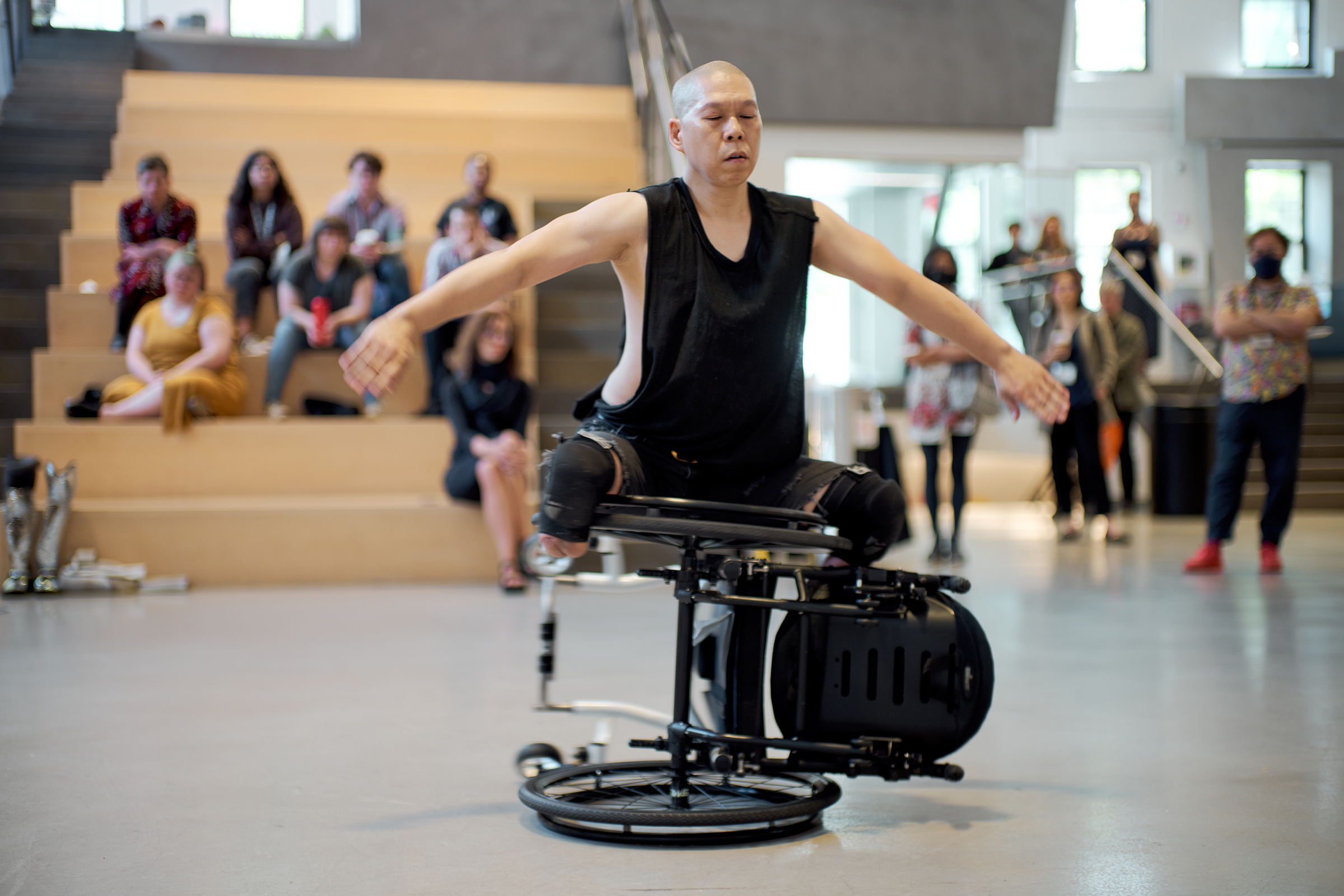How can the creative processes of design unlock the potential of technology and education?
This was one of the core ideas animating the 2023 HASTAC Critical Making & Social Justice conference, which brought together hundreds of artists, academics, designers, community organizers, and technologists to Pratt’s Brooklyn campus this June to participate in talks, interactive workshops, and performances dedicated to changing the way people teach and learn. The annual conference was hosted by Pratt for the first time, and featured sessions that generated fresh collaborations and encouraged participants to think deeply about how things, relationships, and ideas are made and embedded in society.
“Thinking and making are often separated from each other,” said Chris Alen Sula, interim associate provost and chair of the 2023 conference. “It’s also rare to find creative expression alongside the humanities and social science disciplines at the heart of HASTAC. This conference provides an example of what happens when the two are brought together to explore urgent questions of social justice. It reflects so much of what makes a Pratt education unique.”
This year marked the return of the conference to an in-person format and established key areas of focus for HASTAC, the Humanities, Arts, Science, and Technology Alliance and Collaboratory, an academic network with over 18,000 members from more than 400 affiliate organizations. Pratt faculty and students led or collaborated on several sessions that centered ideas of justice, from discussions on unlocking the potential of spatial equity tools to helping communities both access and effectively use digital information, leveraging technology to decolonize teaching, and decolonizing data. These sessions showed how essential a creative education is to finding solutions for burgeoning challenges such as climate change, poverty, and artificial intelligence.
“We anticipated many critical responses to our call for papers,” Sula explained. “What we also found were threads of joy, play, care, wellbeing, hope, and especially community woven throughout the conference. It’s an important reminder that dismantling oppressive structures and building new ones together go hand in hand.”
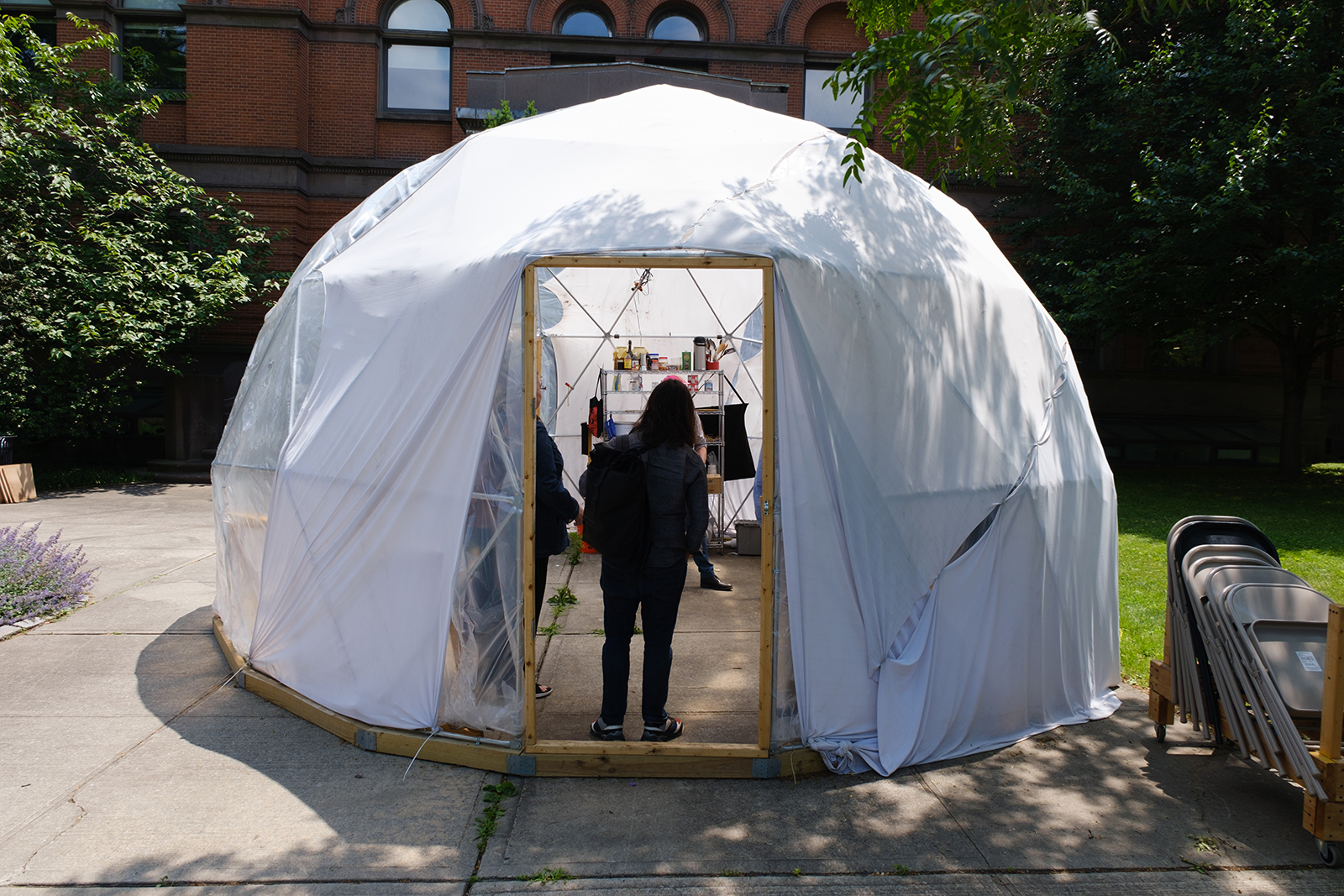
The cross-pollinating nature of the conference was best captured in the keynote address by Sasha Costanza-Chock, author of Design Justice: Community-Led Practices to Build the Worlds We Need (MIT Press, 2020), who discussed the importance of designing with communities rather than simply for them.
“Design justice doesn’t mean that there is necessarily one, best, approach to design processes, it just asks us to more intentionally choose whether we want our work to contribute to dismantling or reproducing inequalities,” said Costanza-Chockin during the keynote. Citing the example of the The Make the Breast Pump Not Suck collective, she described how organizers “worked hard to create a space that was inclusive, centered the experience and expertise of low-income women of color and reproductive justice organizations, and supported participation by mothers with infants and young children.”
Nancy Smith, assistant professor in the School of Information, and Abby Hurst, MSIXD ‘23, designed Multispecies Design Cards that were given to attendees upon registration. The cards feature illustrations of plants and nonhuman animals and words such as “thrive,” “futures,” and “materiality” that are meant to spur creative thinking. Smith led a workshop to guide participants on how to use the cards as a jumping-off point in their creative practices and attendees were encouraged to flip through the deck throughout the conference.
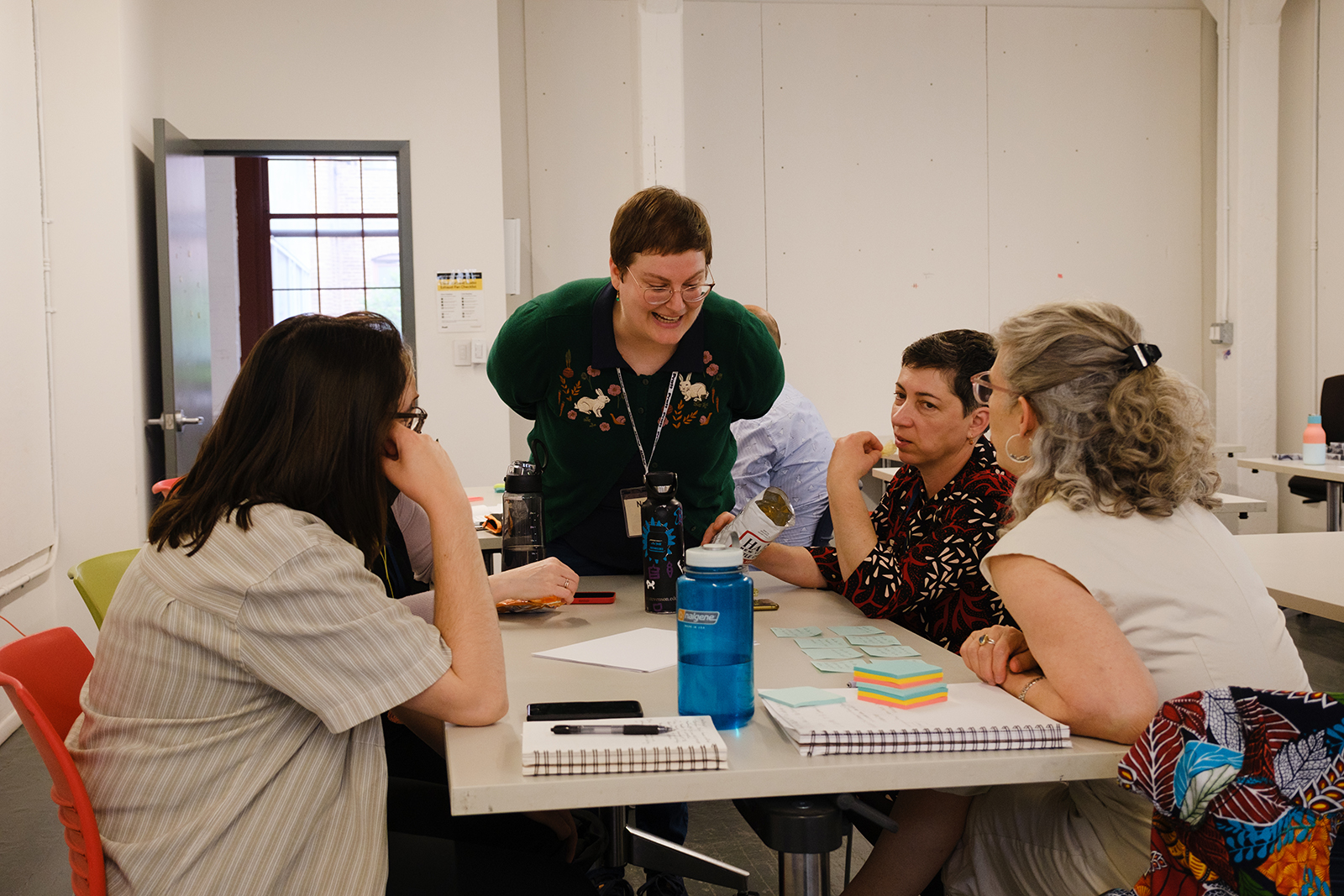
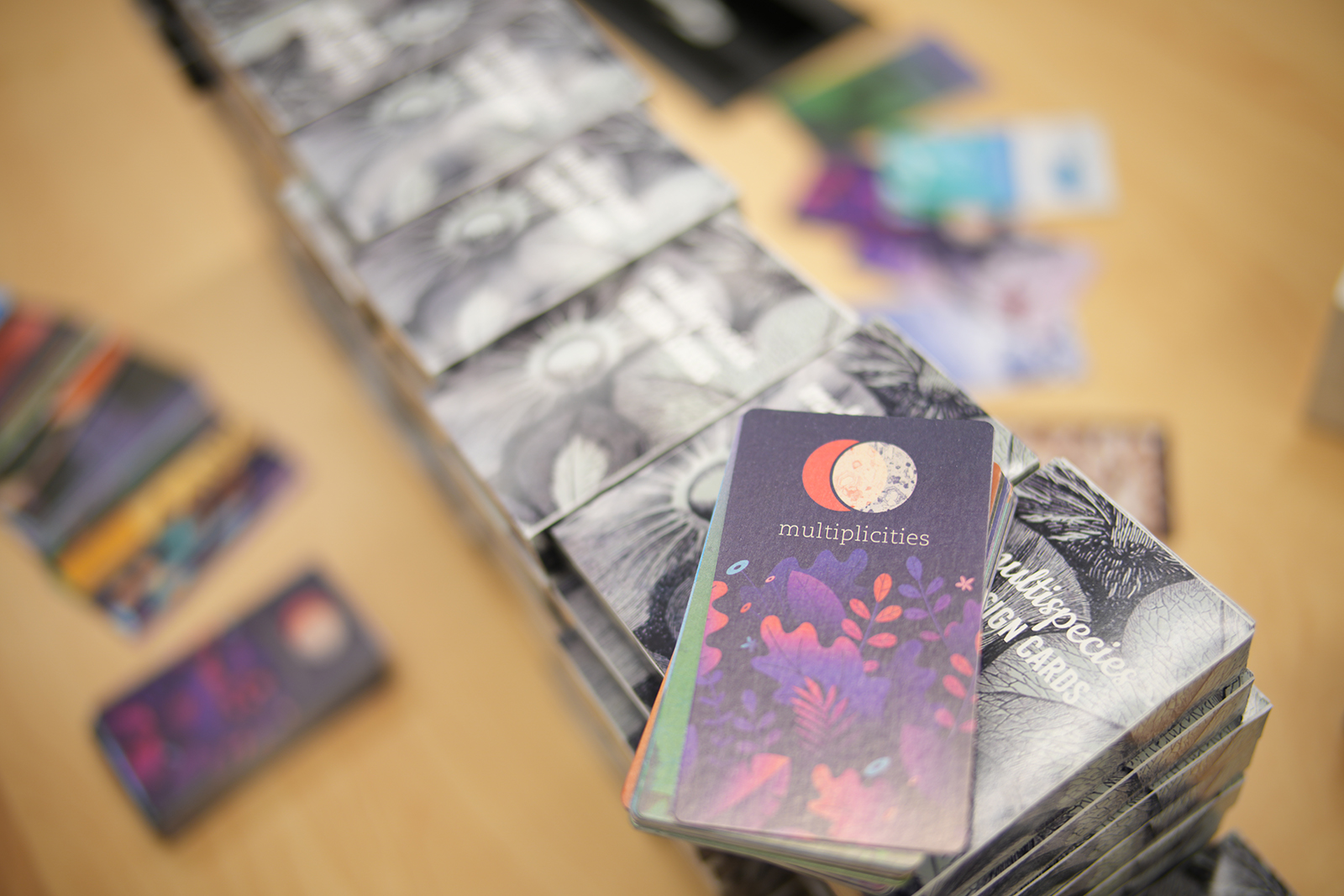
Conference organizers invited local community groups and activists to host sessions to bridge the gap between academic theory and real-world application. Groups such as Open Style Lab, Brownstone Steps Entertainment, and Hamilton Multimedia met potential collaborators and gained arts- and design-oriented insights to apply to their work.
The highly interactive environment included workshops on empathy mapping, ethical design, manifesto writing, physical embodiment, community building, fashion design, and more. In between sessions, there were dance performances, short plays, and visual installations such as a continuous textile map of key words from the conference.
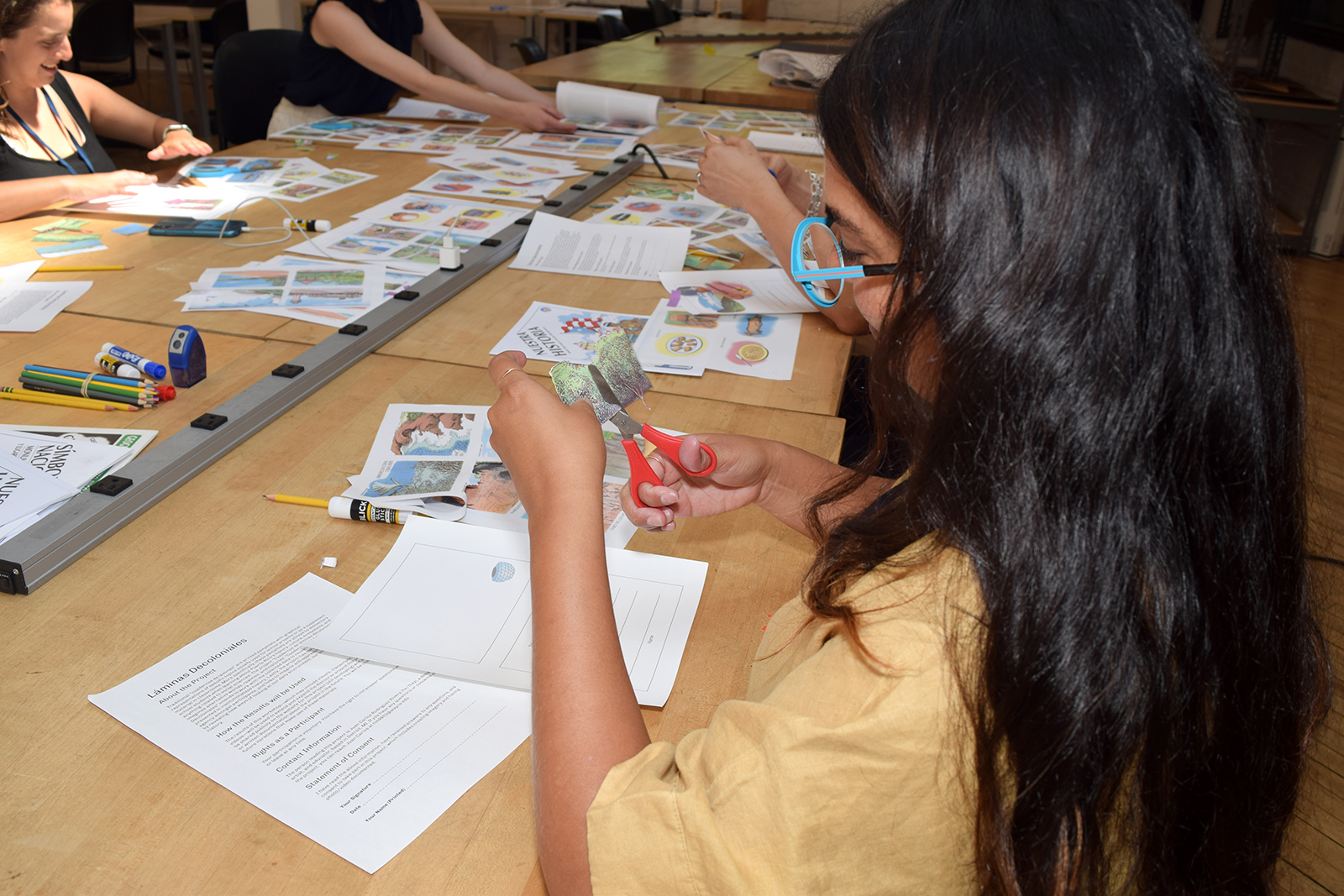
In the Steuben Gallery, an exhibition with dozens of works explored histories of exclusion and future possibilities of liberation across mediums including quilt-making, video games, artificial intelligence, prosthetics, and painting.
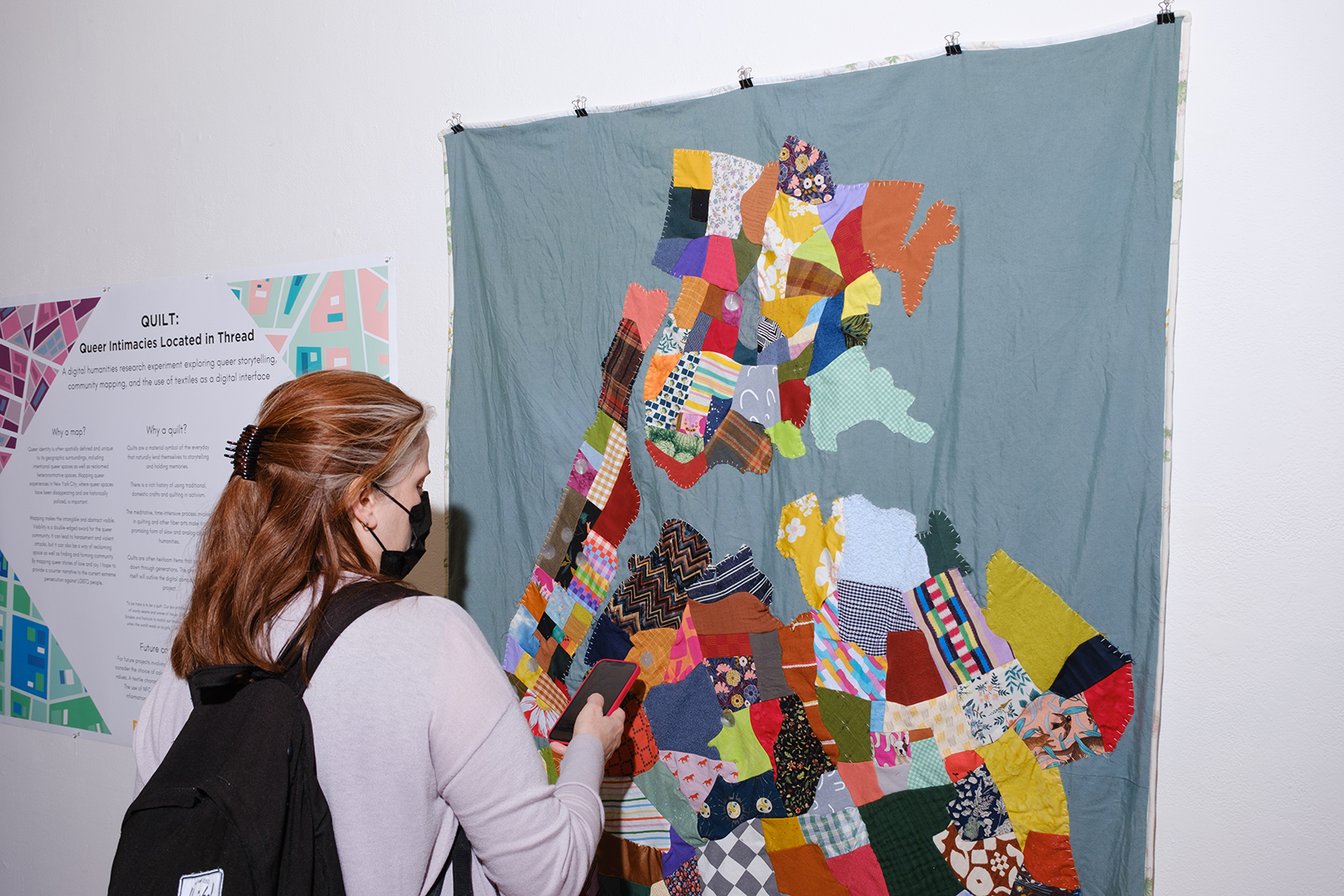
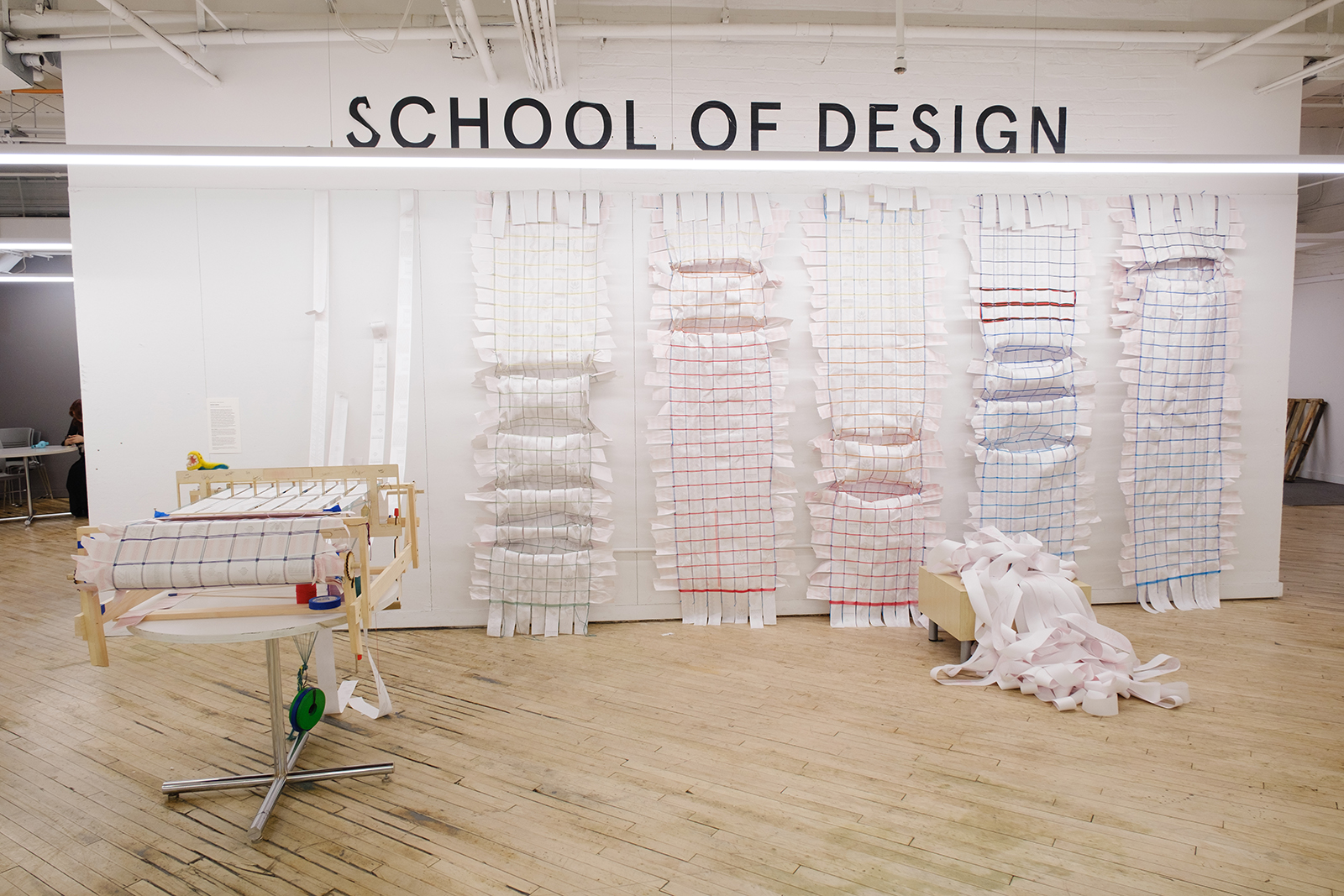
The three days of sessions and networking left attendees with an invigorated sense of possibility for their creative work. As HASTAC seeks hosts for its next conference, the ideas and collaborations fostered by this year’s event at Pratt will be carried forward and expanded.
“We knew from the start that we wanted to offer hands-on, artistic, and interactive opportunities, to complement more traditional academic papers and presentations,” Sula explained. “This conference pushed the bounds of scholarly expression, collaboration, and creativity, and provides an example of what academic work might look like—work that challenges existing modes of scholarship and explores urgent questions of social justice.”
